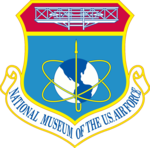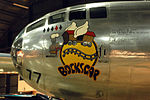Lewis Kemp House
Houses completed in 1806Houses in Dayton, OhioHouses on the National Register of Historic Places in OhioLimestone buildings in the United StatesNational Register of Historic Places in Montgomery County, Ohio ... and 2 more
Saltbox architecture in the United StatesStone houses in Ohio

The Lewis Kemp House is a historic pioneer farmstead in the city of Dayton, Ohio, United States. Built for one of the area's earliest residents, it was a religious center in its first years, while later years saw its expansion to its present form. Now located among much newer houses, it is Dayton's oldest surviving residence, and it has been named a historic site.
Excerpt from the Wikipedia article Lewis Kemp House (License: CC BY-SA 3.0, Authors, Images).Lewis Kemp House
Meyer Avenue,
Geographical coordinates (GPS) Address Nearby Places Show on map
Geographical coordinates (GPS)
| Latitude | Longitude |
|---|---|
| N 39.760138888889 ° | E -84.125833333333 ° |
Address
Meyer Avenue 382
45431
Ohio, United States
Open on Google Maps






